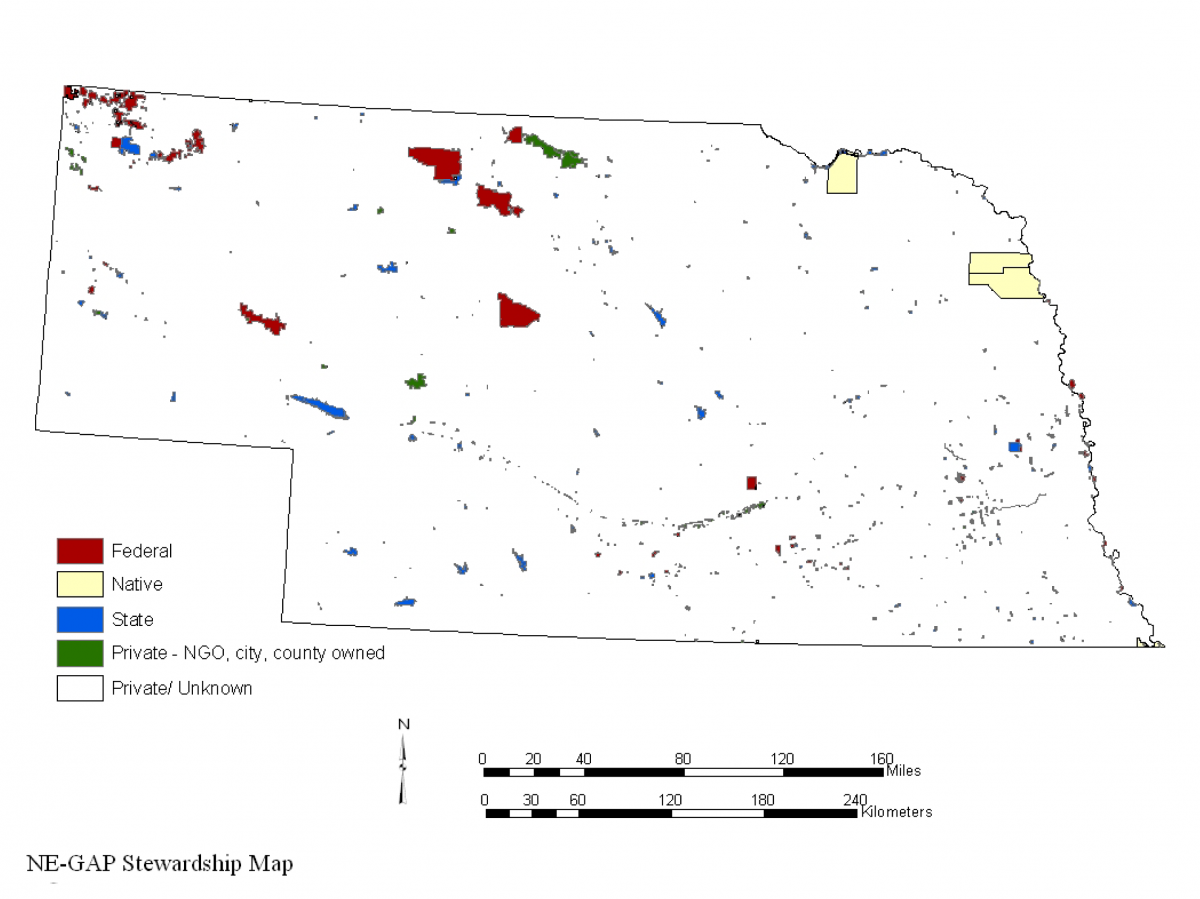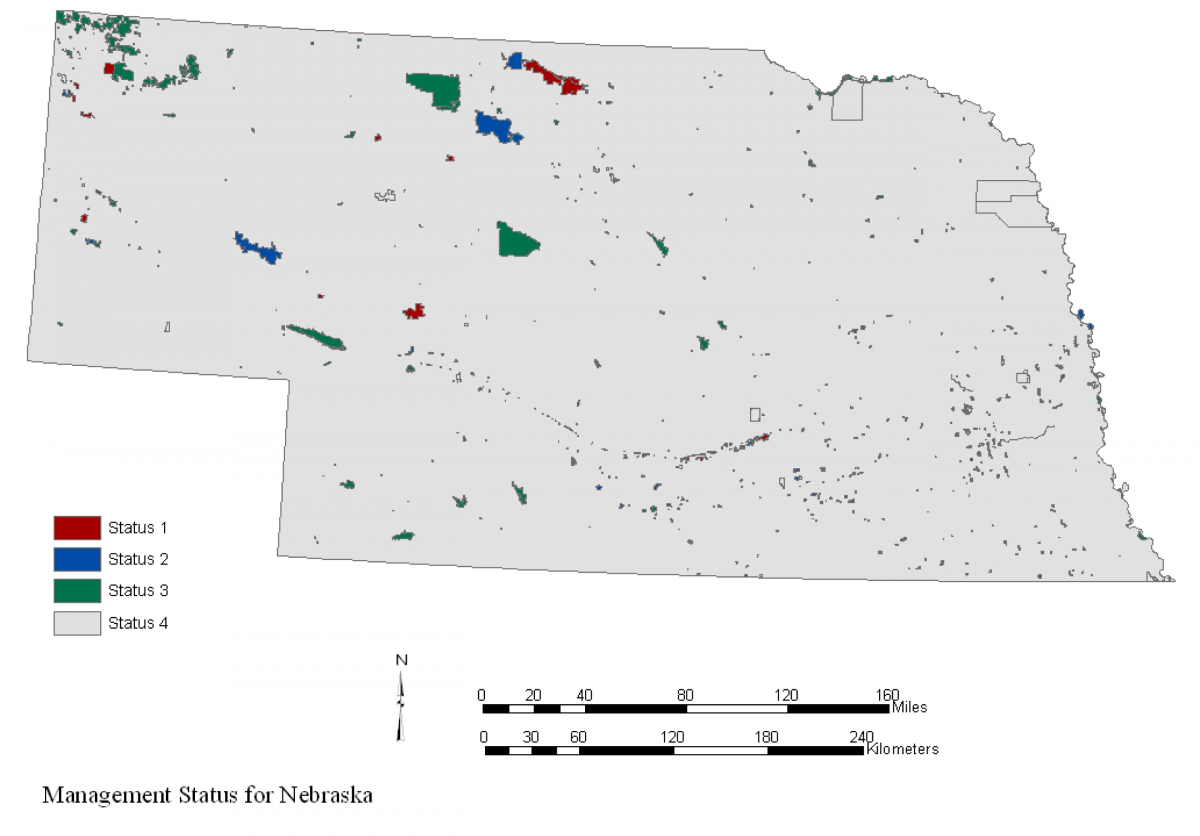Nebraska GapLand Stewardship

Privately owned lands comprise the majority of Nebraska’s land area, (approximately 97.4%) and >98% of land in Nebraska is characterized by the lack of irrevocable easements or mandates to prevent conversion of natural habitat types to anthropogenic habitat types. Only 0.61% of Nebraska’s land area enjoys permanent protection from conversion of natural cover and a mandated management plan. The largest property-owners of these lands are The Nature Conservancy, which manages a number of preserves, and the U.S. Fish and Wildlife Service, which manages three National Wildlife Refuges in the state. Lands with permanent protection from conversion of natural land cover for the majority of the area, but subject to extractive uses, comprise 1.25% of the land area of Nebraska. Primary stewards of these lands include the U.S. Fish and Wildlife Service, which manages numerous waterfowl production areas and the Nebraska Game and Parks Commission, which manages state parks and other recreational areas.


Status definitions:
Status 1: An area having permanent protection from conversion of natural land cover and a mandated management plan in operation to maintain a natural state within which disturbance events (of natural type, frequency, and intensity) are allowed to proceed without interference or are mimicked through management.
Status 2: An area having permanent protection from conversion of natural land cover and a mandated management plan in operation to maintain a primarily natural state, but which may receive use or management practices that degrade the quality of existing natural communities.
Status 3: An area having permanent protection from conversion of natural land cover for the majority of the area, but subject to extractive uses of either a broad, low-intensity type or localized intense type. It also confers protection to federally listed endangered and threatened species throughout the area.
Status 4: Lack of irrevocable easement or mandate to prevent conversion of natural habitat types to anthropogenic habitat types. Allows for intensive use throughout the tract. Also includes those tracts for which the existence of such restrictions or sufficient information to establish a higher status is unknown.
Read the Final Report on Land Stewardship (PDF)
